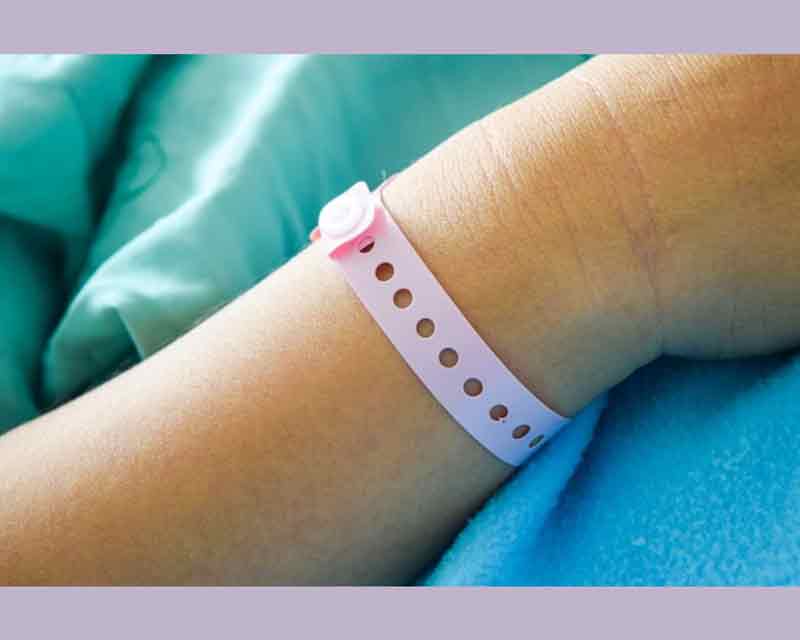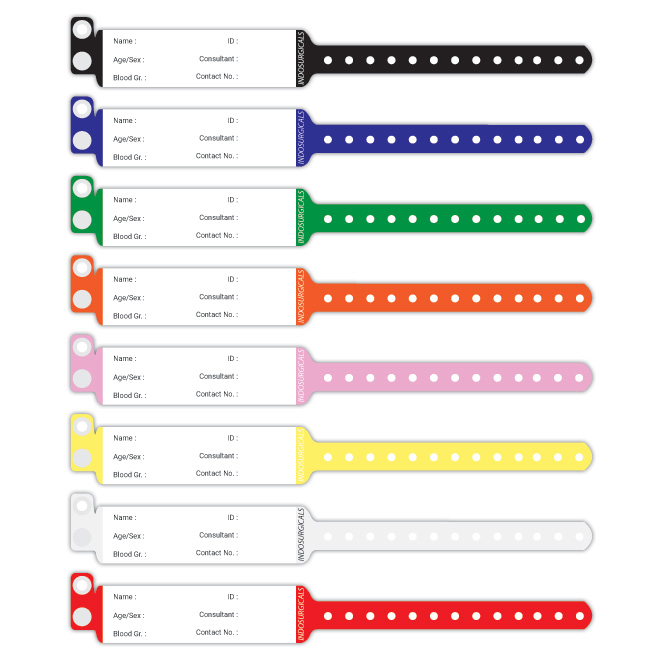Exploring the Perks of a Patient Identification Band in Preventing Medical Errors
Exploring the Perks of a Patient Identification Band in Preventing Medical Errors
Blog Article
Checking Out the Different Sorts Of Patient Identification Band Utilized in Medical Facilities
In the complex globe of health care, the crucial function of Patient Identification bands commonly goes undetected. These bands, varying from basic paper wristbands to innovative RFID bands, create the backbone of Patient safety methods, guaranteeing accuracy in Patient Identification.
Understanding the Relevance of Patient Identification Bands
While they might appear like simple accessories, Patient Identification bands play an essential role in medical facilities. These bands function as a critical device for verifying Patient identification, preventing medical mistakes associated with misidentification. The bands generally present important information such as the Patient's name, age, blood kind, and any type of known allergies. They enable medical care experts to rapidly access this important information, thereby facilitating accurate and punctual medical treatment. Patient Identification bands also help in streamlining administrative jobs, guaranteeing precise record-keeping and payment. Regardless of their simplicity, these bands symbolize the principle of Patient safety and security, a keystone of quality healthcare. Without them, the risk of medical errors, and as a result, Patient damage, could substantially raise.
Standard Paper Wristbands: Their Use and Limitations
Typical paper wristbands have actually been a staple in Patient Identification throughout different clinical centers. While their use prevails, they harbor certain constraints that might impact their performance in Patient monitoring. This area will certainly focus on the extent of their application and the integral disadvantages related to their usage.
Paper Wristbands: Usage Extent
In the realm of Patient Identification, paper wristbands have long held a crucial function. These bands are usually used in outpatient setups, where the Patient's remain is temporary. The wristbands have vital information such as the Patient's name, day of birth, and a special Identification number. This basic, yet efficient system, enables clinical experts to promptly and precisely recognize clients, making certain the appropriate therapy is administered. Paper wristbands are additionally used in emergency scenarios, where rapid Identification is extremely important. Their use includes occasions like blood donation drives and mass inoculation programs, better emphasizing their adaptability. Despite improvements in modern technology, the humble paper wristband stays a economical and reliable service for Patient Identification in numerous medical care scenarios.
Limitations of Paper Wristbands
In spite of their prevalent use, paper wristbands are not without their drawbacks. Their physical toughness is among the considerable restrictions. Exposure to water, sweat, or misuse can make them unreadable or even cause them to disintegrate. On top of that, paper wristbands often lack the technical capacities of even more contemporary options, such as barcoding or RFID chips, limiting their functionality to merely displaying created details. The failure to update or modify the information on the wristband is one more shortcoming. If the information is transcribed, clarity can be compromised, leading to potential misidentification. Paper wristbands can cause pain or skin inflammation to some patients, specifically when used for extensive periods.
Barcoded Wristbands: Advancements in Patient Identification
While Patient Identification has long been a vital element of medical care, the arrival of barcoded wristbands indicates a significant leap forward. These bands leverage the simplicity of barcoding technology, allowing for Patient details to be promptly checked and accessed. They boost the rate and precision of Patient Identification, decreasing the danger of medical errors associated to misidentification.
Superhigh Frequency Identification (RFID) Bands: a Step In The Direction Of Futuristic Healthcare
The evolution of Patient Identification bands has brought about the emergence of Radio Regularity Identification (RFID) Bands (patient identification band). These ingenious devices present vital benefits for healthcare facilities, supplying an extra effective and technologically progressed methods of Patient Identification. The execution of RFID in health care is a significant action in the direction of a much more futuristic strategy to Patient management and safety and security
Comprehending RFID Bands

RFID Bands: Key Benefits
Embracing a future where technology and medical care combine, superhigh frequency Identification bands provide several key advantages. Primarily, these bands boost Patient security by providing accurate, rapid Identification, consequently decreasing medical mistakes. RFID bands can keep a large amount of Patient information, consisting of case history and allergic reactions, enabling individualized treatment. They likewise streamline administrative tasks, as the automated information access replaces hand-operated procedures, enhancing performance and lowering documentation. Furthermore, RFID bands provide real-time monitoring of patients, essential in high-risk settings such as surgical procedure or intensive care. These bands are durable and immune to environmental variables, ensuring consistent functionality. In general, RFID bands represent a substantial development in Patient Identification innovation, benefiting both people and health care suppliers.
Executing RFID in Health Care
As we tip right into a highly innovative period, the implementation of RFID bands in healthcare becomes increasingly vital. These bands offer a seamless way to track and identify patients, ensuring their safety and improving efficiency in therapy procedures. RFID bands supply countless benefits over typical Identification approaches. They can save a substantial quantity of information, consisting of the Patient's case history and therapy strategies, which can be quickly accessed by discover this healthcare companies. This data helps medical professionals make educated choices relating to the Patient's treatment strategy. RFID bands lower clinical errors by giving exact Patient my company Identification, which is crucial in protecting against misdiagnosis or wrong medication management. Therefore, the implementation of RFID bands is a substantial step towards boosting Patient safety and security and health care delivery.

Color-Coded Wristbands: Helping in Quick and Accurate Medical Diagnosis
In the busy setting of a medical center, color-coded wristbands have arised as essential tools for swift and specific Identification of a client's clinical condition. These wristbands, used by people, carry particular shades that correspond to various clinical conditions or conditions. This system is created to offer immediate aesthetic signs to healthcare suppliers, boosting Patient safety and care high quality.
Approaches for Effective Application and Administration of Patient ID Bands
Attaining optimal use Patient Identification bands requires a well-structured method for their execution and monitoring. The primary step involves training all health personnel on the significance of properly applying and checking out these bands. Secondly, health centers need to systematize using ID bands throughout all divisions, making certain harmony and lowering disparities. Regular audits should be performed to validate adherence to plans and to correct any disparities. Patient education and learning is additionally vital; individuals need to comprehend the purpose of the bands and the demand for their continuous wear. patient identification band. It's important to have a backup plan in area, such as barcode scanning or biometrics, to ensure that Patient Identification is never ever jeopardized.
Conclusion
Patient Identification bands are crucial in medical centers to make certain safety and accuracy. Efficient execution and monitoring of these bands can considerably minimize clinical mistakes, enhance efficiency, and improve general Patient care.
These bands, differing from basic paper wristbands to innovative RFID bands, form the backbone of Patient safety protocols, making sure accuracy in Patient Identification.The development of view it now Patient Identification bands has brought about the development of Radio Frequency Identification (RFID) Bands. In general, RFID bands represent a considerable improvement in Patient Identification innovation, benefiting both individuals and medical care providers.
RFID bands reduce medical mistakes by giving exact Patient Identification, which is essential in protecting against misdiagnosis or incorrect medicine management. Patient education is also crucial; people have to recognize the objective of the bands and the requirement for their continuous wear.
Report this page